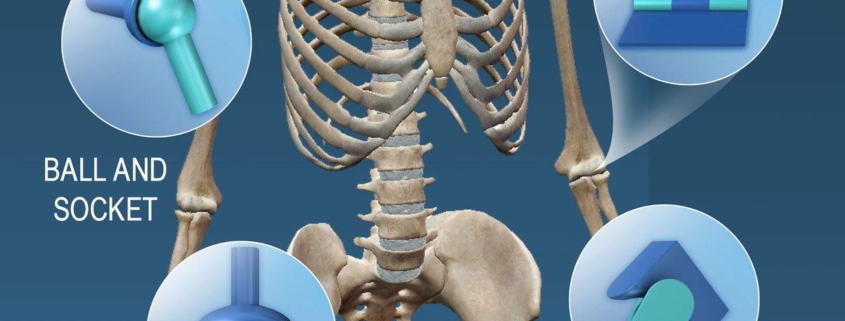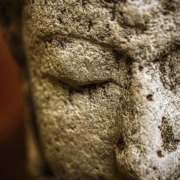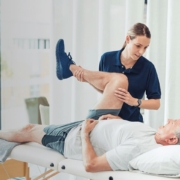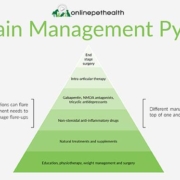5 Surprising Habits Hurting Your Joints and How to Fix Them
Title: 5 Surprising Habits Hurting Your Joints and How to Fix Them
When it comes to joint health, most of us think about the usual culprits: age, injury, and perhaps a lack of exercise. However, there are hidden habits lurking in our daily routines that could be silently sabotaging our joints without us even realizing it. In this listicle, we’ll uncover five surprising habits that might be causing you more harm than good. From seemingly innocent choices to common misconceptions, each item on our list will not only shed light on the problem but also provide practical solutions to help you protect your joints. By the end, you’ll be equipped with valuable insights that can lead to a healthier, more mobile lifestyle. Let’s dive in and discover how small changes can make a big difference!
1) Sitting Too Long: Prolonged periods of sitting can lead to stiffness and weakened muscles around your joints. To combat this, set a timer to remind yourself to stand up and stretch every hour, or incorporate short walks into your daily routine
Prolonged periods of sitting can wreak havoc on your joints, leading to stiffness and weakened muscles that support them. When you remain sedentary for too long, your body tends to adopt a rigid posture, which can exacerbate discomfort and limit your range of motion. To counteract these effects, consider implementing a few simple strategies into your daily routine. For instance, setting a timer to remind yourself to stand up and stretch every hour can be a game changer. This not only helps alleviate stiffness but also encourages blood circulation, which is essential for joint health.
In addition to regular stretching, incorporating short walks into your day can significantly improve your joint mobility. Aim for a brisk five-minute walk every hour, whether it’s around your office or through your home. This small change can make a big difference. Here are some quick tips to enhance your movement throughout the day:
- Use a standing desk: Alternate between sitting and standing to reduce prolonged pressure on your joints.
- Take the stairs: Opt for stairs instead of elevators whenever possible.
- Stretch at your desk: Simple stretches can be done right at your workstation.
To visualize your progress, consider tracking your movement with a simple table:
| Activity | Duration | Frequency |
|---|---|---|
| Stretching | 5 minutes | Every hour |
| Walking | 5 minutes | Every hour |
| Standing breaks | 2 minutes | Every 30 minutes |
2) Ignoring Pain: Many people dismiss joint pain as a natural part of aging or overexertion, but ignoring these signals can lead to more severe issues. Pay attention to your bodys warnings and consult a healthcare professional if you experience persistent discomfort
Many individuals mistakenly believe that joint pain is simply an inevitable consequence of aging or the result of pushing their bodies too hard during physical activities. This mindset can be dangerous, as it often leads to ignoring the body’s critical warning signals. Joint pain can be a sign of underlying conditions such as arthritis or tendonitis, which, if left untreated, can result in chronic pain and reduced mobility. Instead of brushing off discomfort, it’s essential to listen to your body and recognize that persistent pain is not normal. Seeking advice from a healthcare professional can help identify the root cause and prevent further complications.
To better understand the implications of ignoring joint pain, consider the following potential consequences:
- Increased Inflammation: Chronic pain can lead to swelling and inflammation, making the situation worse.
- Reduced Range of Motion: Over time, untreated pain can limit your ability to move joints freely.
- Development of Compensation Injuries: Favoring a painful joint can result in strain on other parts of the body.
If you are experiencing ongoing discomfort, it’s crucial to take proactive steps:
| Action | Description |
|---|---|
| Consult a Specialist | Schedule an appointment with a healthcare provider for a thorough evaluation. |
| Keep a Pain Journal | Document when and where the pain occurs to help identify triggers. |
| Engage in Gentle Exercise | Incorporate low-impact activities like swimming or yoga to maintain joint health. |
3) Skipping Warm-Ups: Jumping straight into physical activity without a proper warm-up can strain your joints and muscles. Make it a habit to spend at least five to ten minutes warming up with dynamic stretches or light cardio to prepare your body for exercise
Jumping into physical activity without a proper warm-up is like diving into a pool without checking the water level—risky and potentially harmful. When you skip this essential step, you’re putting unnecessary strain on your joints and muscles, which can lead to injuries that sideline your fitness journey. Instead of going straight for that intense workout, take a moment to engage in some dynamic stretches or light cardio. This practice not only increases blood flow to your muscles but also enhances flexibility, making your body more resilient to the demands of exercise.
Consider incorporating the following warm-up activities into your routine:
- Arm Circles: Great for shoulder mobility.
- Leg Swings: Helps loosen hip joints.
- High Knees: Elevates heart rate and warms up lower body.
- Torso Twists: Engages core and improves spinal mobility.
By dedicating just five to ten minutes to these warm-ups, you’ll prepare your body for the workout ahead, ultimately enhancing performance and reducing the risk of injury. Remember, a little preparation goes a long way in ensuring your joints stay healthy and strong!
4) Overdoing High-Impact Workouts: While staying active is crucial, excessive high-impact exercises can wear down your joints over time. Consider mixing in low-impact activities like swimming or cycling to give your joints a break while still getting a good workout
High-impact workouts, such as running, jumping, and high-intensity interval training (HIIT), can be exhilarating and effective for burning calories and building strength. However, when done excessively, these activities can lead to joint pain and injuries. The repetitive stress on your joints can accumulate over time, resulting in conditions like tendonitis or even osteoarthritis. It’s essential to listen to your body and recognize when you might be pushing it too far. Incorporating rest days and varying your workout routine can help mitigate these risks.
To maintain a balanced fitness regimen, consider integrating low-impact exercises into your weekly routine. Activities like swimming, cycling, or yoga not only provide excellent cardiovascular benefits but also allow your joints to recover from the strain of high-impact workouts. Here’s a quick comparison of high-impact versus low-impact activities:
| Activity Type | Joint Impact | Benefits |
|---|---|---|
| High-Impact | High | Burns calories quickly, builds strength |
| Low-Impact | Low | Improves endurance, less strain on joints |
By strategically alternating between high-impact and low-impact workouts, you can enhance your overall fitness while protecting your joints. This balanced approach not only helps in injury prevention but also keeps your workout routine fresh and engaging.
5) Poor Footwear Choices: Wearing unsupportive shoes can lead to misalignment and stress on your joints, especially in the knees and hips. Invest in quality footwear that provides adequate support and cushioning, and consider orthotic inserts if necessary to enhance comfort
Many people underestimate the impact that poor footwear choices can have on their joint health. Wearing shoes that lack proper support can lead to a cascade of issues, starting from your feet and radiating up to your knees and hips. Flat soles, high heels, and worn-out sneakers can contribute to misalignment, causing your body to compensate in ways that put undue stress on your joints. To avoid these problems, it’s essential to prioritize comfort and support in your daily footwear. Look for shoes that feature arch support, cushioning, and a sturdy heel to help maintain proper alignment and reduce strain on your joints.
If you find yourself frequently experiencing discomfort, it may be time to consider adding orthotic inserts to your shoes. These custom or over-the-counter inserts can provide additional support tailored to your foot’s unique shape and needs. When shopping for new footwear, keep these tips in mind to ensure you make a wise investment:
| Footwear Features | Benefits |
|---|---|
| Arch Support | Helps distribute weight evenly, reducing strain on joints. |
| Cushioning | Absorbs shock, protecting joints from impact. |
| Sturdy Heel | Provides stability, preventing ankle injuries and misalignment. |
| Breathable Material | Keeps feet dry and comfortable, enhancing overall foot health. |
In Retrospect
As we wrap up our exploration of the five surprising habits that may be silently sabotaging your joint health, it’s clear that small changes can lead to significant improvements. Whether it’s rethinking your daily posture, adjusting your exercise routine, or simply being more mindful of your movement, each step you take toward better habits can pave the way for a more comfortable and active life.
Remember, your joints are the foundation of your mobility, and caring for them is an investment in your overall well-being. So take a moment to reflect on the habits you’ve learned about today. Are there adjustments you can make? By implementing these simple fixes, you’ll not only protect your joints but also enhance your quality of life.
Thank you for joining us on this journey to better joint health. Here’s to moving freely and living fully!










Leave a Reply
Want to join the discussion?Feel free to contribute!